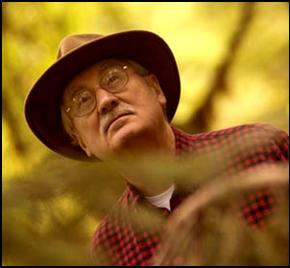After a wee hiatus, it seems sensible to
avoid having a discussion of wildfire and how to deal with it as a community, in a vacuum.
Thus, Life in the Fire Lane - PART DEUX, is born.
I've been doing a lot of research - journalism-like research - on the overall disfunctionality of our wildfire prevention scheme, and a little bit of work on the multi-agency structure of wildfire response and suppression, and I think it's work sharing, the solicitation of feedback and coordination between active groups bordering the Los Padres National Forest.
My wonderful partner, Martha, has gotten caught up in this - one might say, it's "caught fire" with her, and she's coming up with ideas and references that have been and continue to be, extremely useful.
I would hope that you, who have taken the time to visit this 'blog and read, will also feel inclined to share your ideas, contacts, activities and knowledge!
I hope to develop a series of radio pieces on these subjects, to be aired, perhaps, on
KUSP Central Coast Public Radio at some time in the not too distant future.
There are also lessons to be learned from activities - success stories, really - in groups not local.
Hopefully, this 'blog can make a contribution to furthering the understanding and discussion of how we who life cheek-to-cheek with wildfire-prone lands, should act in order to protect our lives, property and the natural environment of the spectacular area in which we live.
On a practical note, I have ideas and information from recent meetings and conversations on about managing in the face of threat of wildfire.
I'm editing some rather lengthy audio from a meeting in Pacific Valley, in Big Sur south, from the previous Thursday (July 31)....
many thanks for the audio tapes - I was a few minutes late to this 2-hour long meeting - to Linda Padilla, who also made a lovely contribution to
KUSP, just because she wanted to do so!
I also had the opportunity to meet
Big Sur Kate tete-a-tete... hiya, Kate!!! Great to meet you!
There's much to discuss and very few for whom interest will outlast the immediate threat of wildfire.

But, we're in good company. Here's the question that poet
Gary Snyder, a Grass Valley resident, posed to forest scientist Jerry Franklin:

"I was on a panel in San Francisco several years with Jerry Franklin the eminent forest scientist now based at the University of Washington. So last month I took it on myself to write him the following question:
'When I talk to the Biodiversity Council in June, I would like to be able to say something like this: 'Long range sustainable forestry practices - that will support full biodiversity - and be relatively fire-resistant - and also be on some scale economically viable - over centuries - is fully possible. And what we must now do is search out and implement the management program that will do that.' Do you think I can say this and the science will support it? Any comments?'
Jerry Franklin immediately wrote me back,
'What you propose is totally and absolutely feasible for the Sierra Nevada. I.e., long-term sustainability, full biological diversity, relative fire resistance (low probability of catastrophic crown fire), and economic viability. A system which provides for restoration and maintenance of a large diameter tree component (with its derived large snags and down logs) and which provides for moderate to high levels of harvest in the small and medium diameter classes (allowing escapement of enough trees into the large diameter class to provide replacements for mortality in the large diameter group) and prescribed burning in some locations can do this. Other considerations include riparian protection and, perhaps, shaded fuel breaks. Economic and sustainable in perpetuity!' "
To quote SuperMario.... "Here weee g-o-o-o-o-o-oooooooo..."
 October 18, 2008...
October 18, 2008...






















